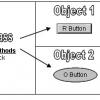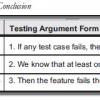Test Design
Articles
|
Changing the QA Mindset for Rich Internet Applications Today's Rich Internet Applications (RIAs) bear about as much resemblance to the early Web sites of the 1990s as today's cars bear to a Model T. While the principle may be the same, the underlying technology is radically different. While safety testing for automobiles has improved significantly in the past hundred years, though, Web-application testing remains stuck in a 1990s mindset. In this week's column, Bryan Sullivan explains that QA must change its testing approach in order to maintain the security of the code. |
||
|
What Not to Test When It's Not Your Code This article is a continuation of a previous write-up on "What to Test When It's Not Your Code." As mentioned previously, test strategies should be radically different and flexible when it comes to testing code delivered by any vendor external to an organization. Similarly, the rationale behind deciding what does not need to be tested or what is given the lowest testing priority for external software products should be radically different from the rationale practiced for in-house software products. The reason for the differences has a lot to do with the risk posed by the third-party application on the daily operations of the organization. Also, the credibility of the vendors can play a major role when deciding what takes a lower priority in testing. |
Ipsita Chatterjee
April 24, 2007 |
|
|
A Game Plan for Rapid Test Planning Rapid test planning is a process of cultivating test ideas within minutes, rather than days. It's opposed to rigorous test planning, which may strive to document every test possibility. The mission is to get testing on the road now, finding critical things to test, and getting important information to stakeholders quickly. In this article, Jon Bach explains how easy it can be to tackle a rapid test plan once you've got a strategy in mind. |
||
|
Looks Do Matter In a previous article published on this site, "Testing the Bold and the Beautiful" (May 2001), the author received many thoughtful comments and questions about the importance of aesthetics in software. This paper was inspired in part from those questions. It clarifies the difference between aesthetic testing and usability testing. The paper makes the business case for "beauty testing" and argues that an ugly UI can undermine the bottom line. It offers methods and a survey-template for successful aesthetic testing. The paper concludes with a list of "Facts and Myths, Dos and Don'ts." |
||
|
Improving the Accuracy of Tests by Weighing the Results Test automation is often hard to do well, especially when testing a complex system where the results may be dynamic and hard to predict precisely. For instance, how would you test a price finder for highly volatile products such as airline tickets, where the data comes from live, third-party systems? While manual testers can interpret such results to decide whether a system is working correctly, the interpretation may be much harder to codify in an automated test. In this week's column, Julian Harty describes an approach that may help you to improve the accuracy of your automated testing even in these volatile environments. |
Julian Harty
February 9, 2007 |
|
 |
Object of My Desire Object orientation, the least talked about component of test automation, might be the most important factor. In this column, Dion Johnson explains how effective test automation is heavily reliant on objects. |
|
|
Why You Need to Be Specific about Agile Practice Adoption Amr Elssamadisy presents one way to share our knowledge that is more specific than full methodologies and processes, more general than war stories, and will help new agile adopters get beyond the mantra "It depends!" |
||
|
Write a Blockbuster Using User Scenarios Big projects require many little user stories. But if these scenarios don't add up to one good story, then you're probably missing out on the big picture. In this week's column, Jeff Patton describes how his team weaves many small tales into a single strong report by identifying key characters and themes. |
||
 |
Understanding the Logic of System Testing This article discusses the logic of system testing and how to construct the valid proofs that testers can use to assess the quality of a software product. |
Yuri Chernak
March 30, 2006 |
|
Using Mocks to Verify Interactions In the March 2006 issue of Better Software magazine, Dan North began a discussion of the evolution of behavior-driven development from test-driven development. Here, North continues the conversation with closer look at "mocks," utility classes that, for testing purposes, pretend to be some component or service with which your object will interact. |








